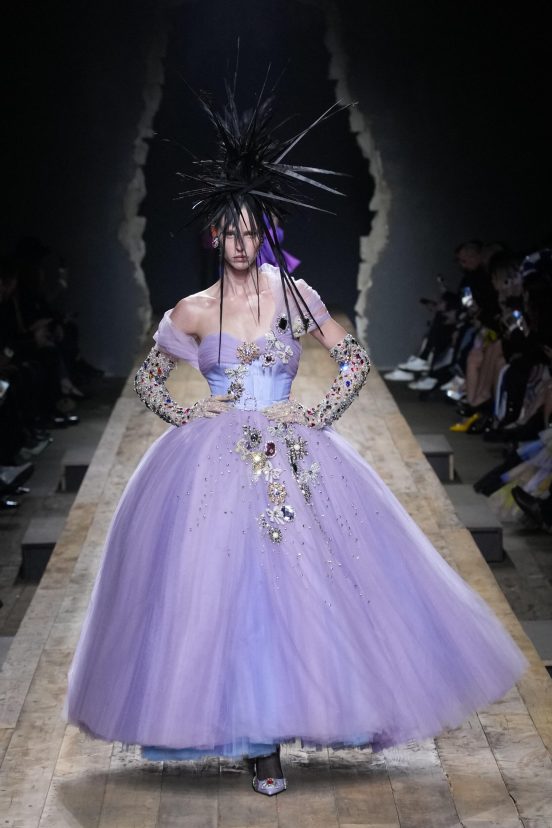Review of Moschino Fall 2023 Fashion Show
Couture-Core
By Mark Wittmer
For Fall 2023, Moschino creative director Jeremy Scott that deftly carried forward the house’s signature brand of pop-art playfulness and wordy witticism, using the language of design history itself – from both within and without the world of luxury – to send a bold message of subversive sincerity.
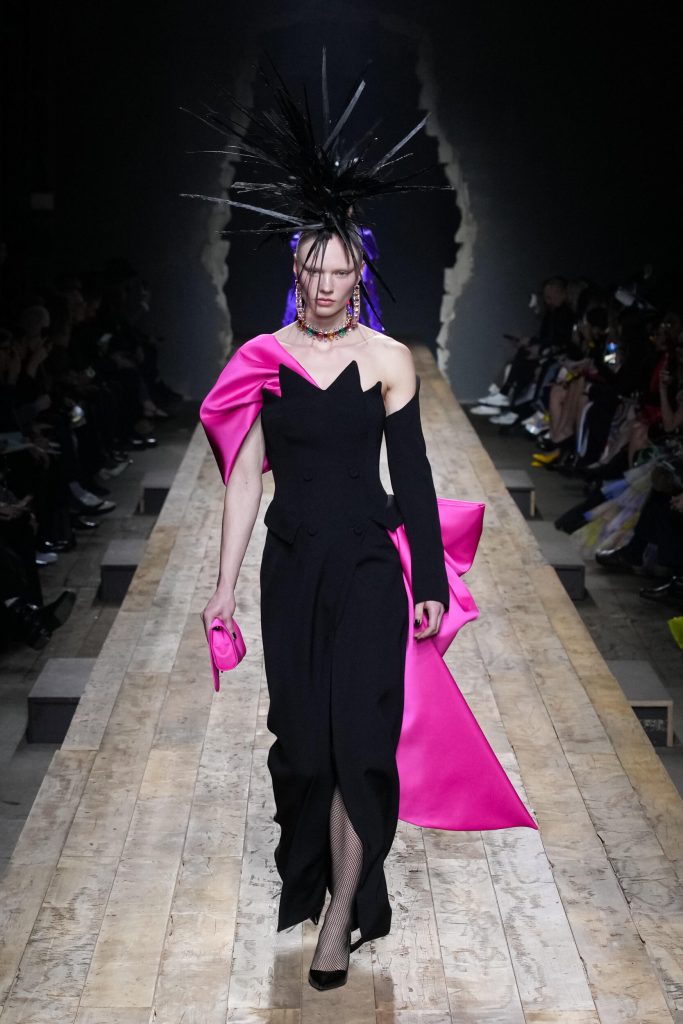
Combining his signature penchant for campy cool with couture craft and raucous punk codes, Scott creates another excellent collection that at once subverts and celebrates the legacy of luxury women’s fashion.
The first striking feature of the show that’s worn with every look is the presence of huge, spiky hairpieces that recall punk hairstyles and anime heroes, and which would have been equally at home on a Comme de Garçons Homme Plus runway. At first, the angular punk aggression of this headgear seems out of place: the silhouettes strike us as familiarly chic and prim, black-and-white tweed sets and pencil dresses playfully borrowed from Chanel. But on closer inspection, we can see that these chicly staid staples are psychedelically melting, from the goopy asymmetrical cuts of the skirts to the houndstooth and check pattern itself, and even down to the accessories and shoes.
The fishnet tights, bras, and tops worn layered under these looks – and worn with almost every look across the whole collection – embody both aspects of fishnet’s two typical cultural aspects, as a symbol of punk liberation and as a symbol of classic yet powerful feminine sexuality.
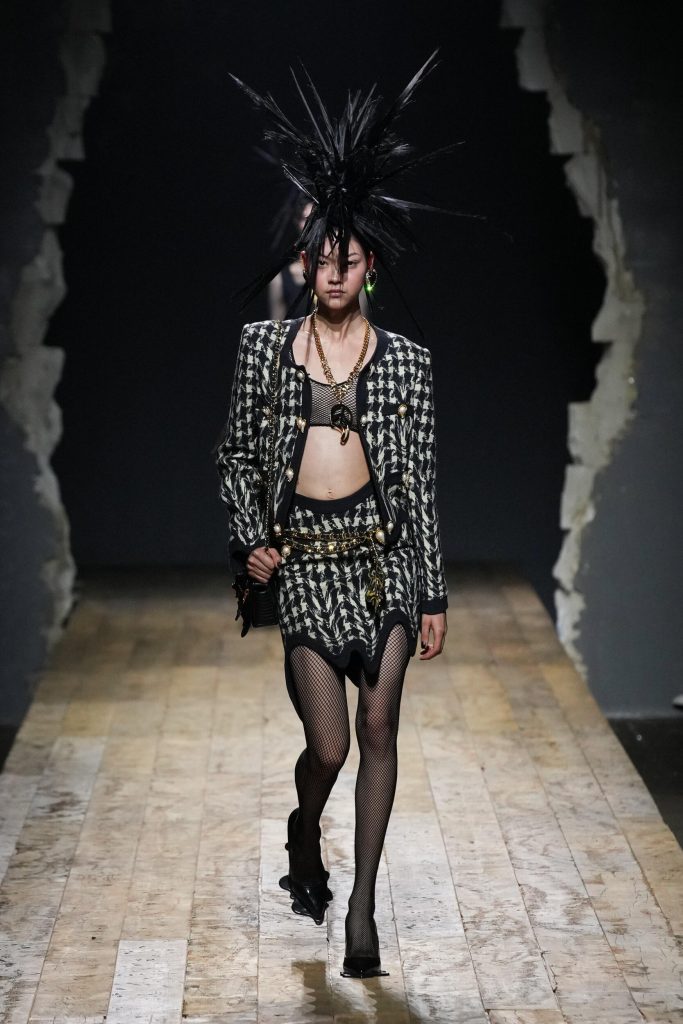
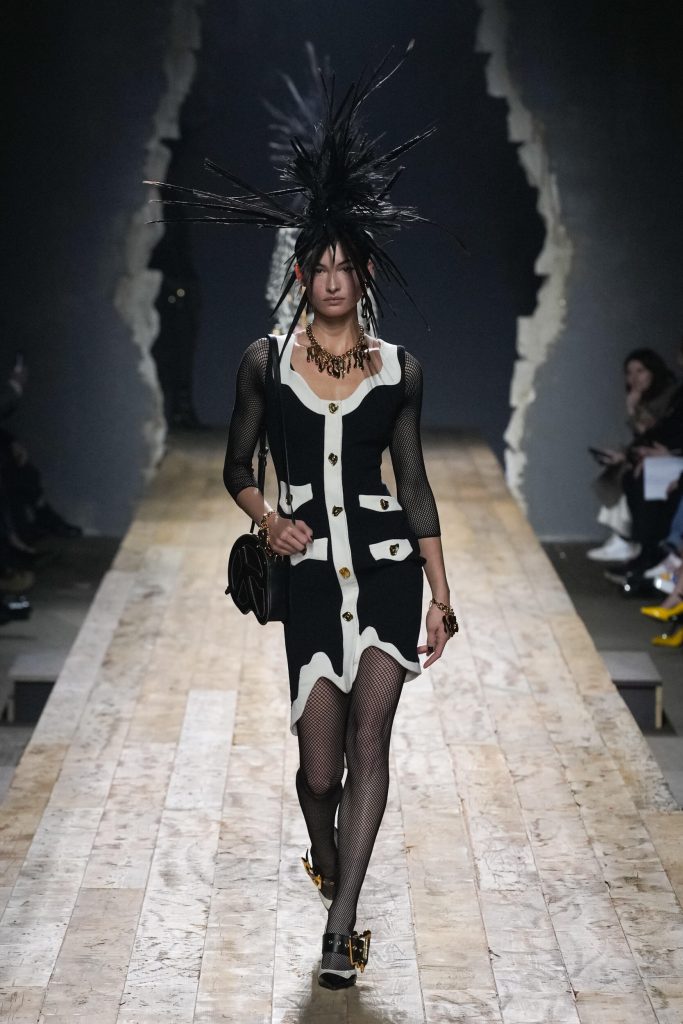
Color enters the collection after ten looks in bright fuchsia, purple, and poppy, threading in more of the vibrant and carefree campiness for which Scott is loved. Melty floral patterns continue the drippy and distorted motif, while oversized and exaggerated leather jacket spikes further push the punk spirit.
Meanwhile, some inventive tailoring and dressmaking skills provide a structure of nostalgically gorgeous beauty for these playful details to dance across. While Scott may have a penchant for the outrageous, he’s also seriously skilled and knowledgeable about the history of fashion. He riffs on the construction of gowns from the past century or two, exaggerating bows, flounces, ruffles, and sleeves, and even serving up a dress that looks like it would fit right in at an aristocratic Russian ball in a Tolstoy novel.
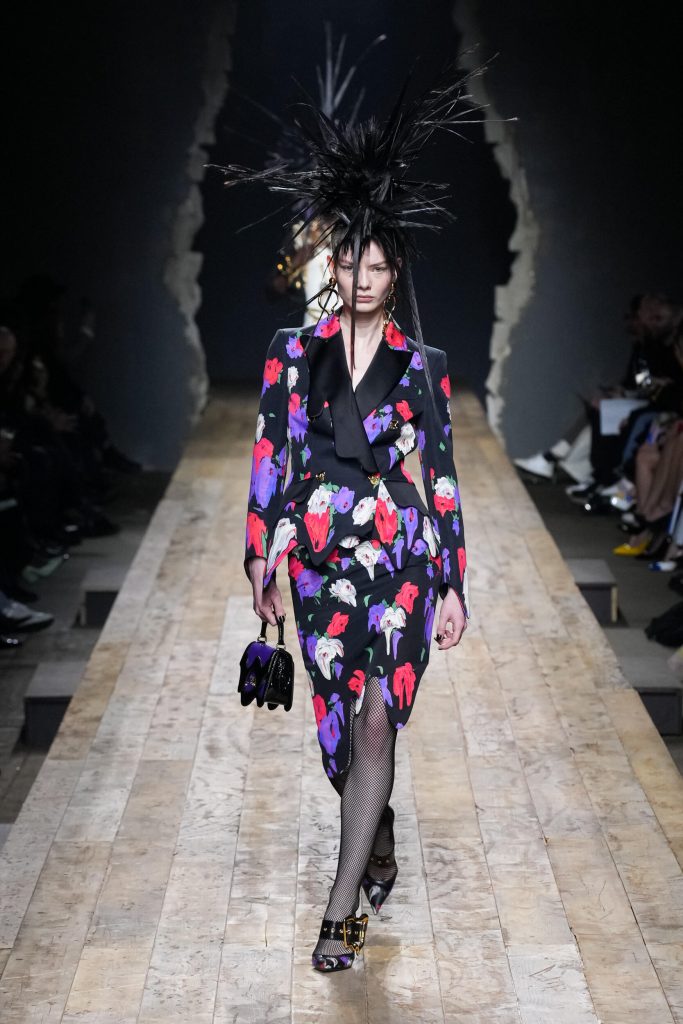
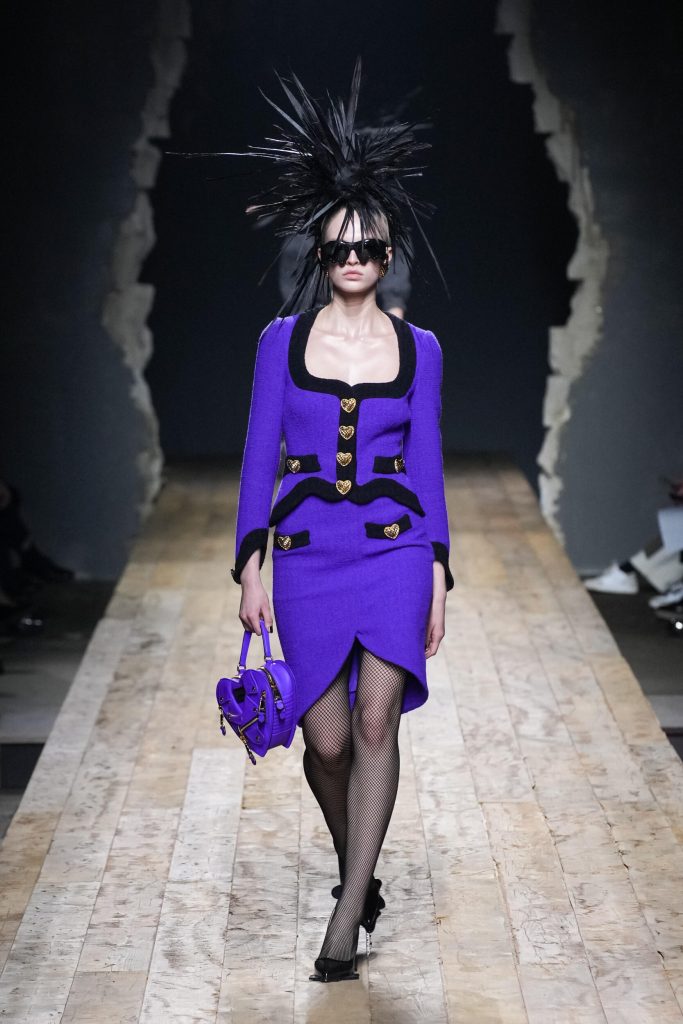
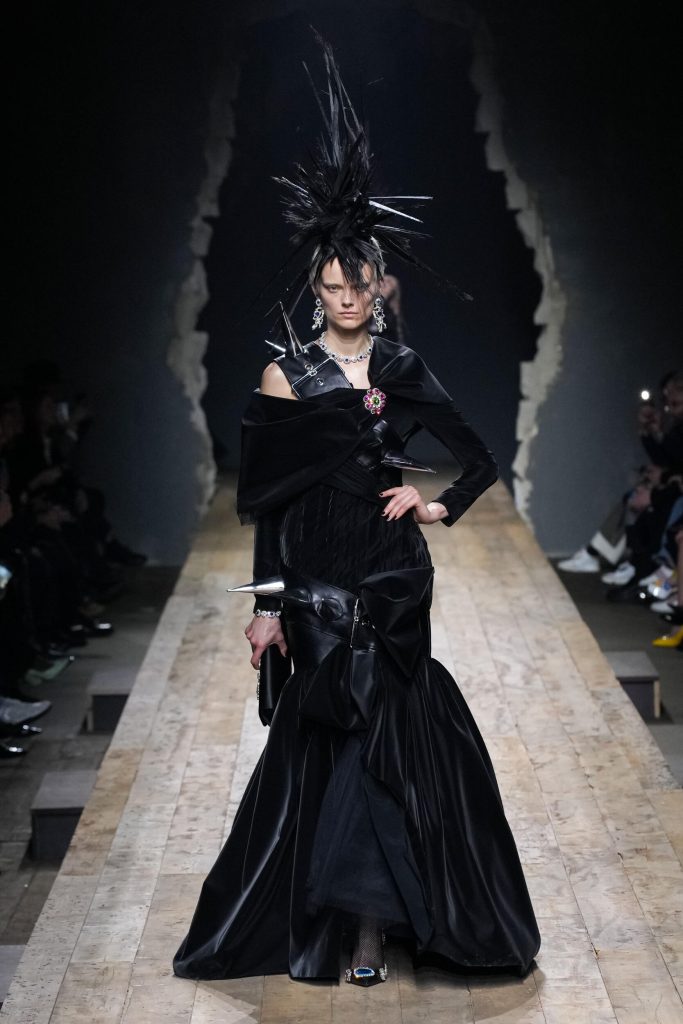
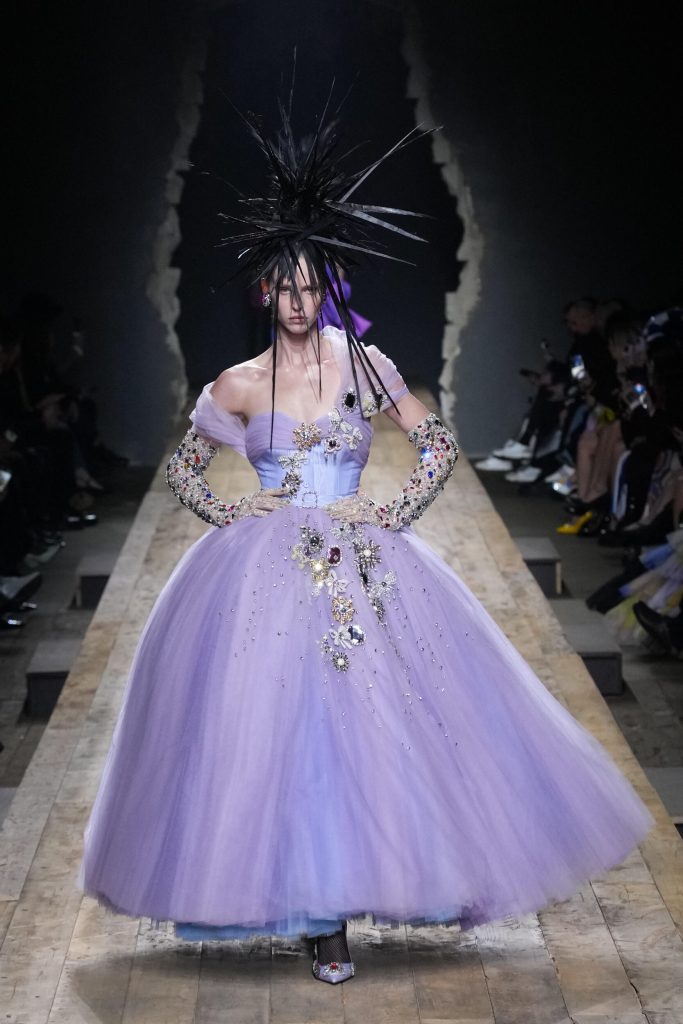
While the color scheme stays pretty focused in its bold jewel-tone instances of hot colors (pink, purple, red, and an occasional yellow and orange) always punctuated by black, the generous crystal embellishments that sparkle across some pieces are realized in every color of the rainbow, as if in these instances Scott is more interested in the maximal sensory impact of color itself than the singular impact of his more focused statements.
These looks could almost be said to be willfully tacky, were it not for the evident sincerity and elegance that also came with them. In this connection, the collection feels like one of the strongest examples of the status of Scott’s work at Moschino as one of the very few successful examples of camp in fashion. As Susan Sontag identifies in her essay “Notes on Camp,” the most famous and resonant attempt to understand the phenomenon of campiness, camp requires sincerity and a certain lack of self-awareness. Something that tries to be campy or to ironically repeat the truly campy will just be tacky or cynical.
While Scott’s Moschino is self-referential – it feels deeply concerned with playing with the perception and history of fashion, capital F – it’s also totally liberated; it takes in the whole idea of fashion with one glance while being purely and playfully itself.
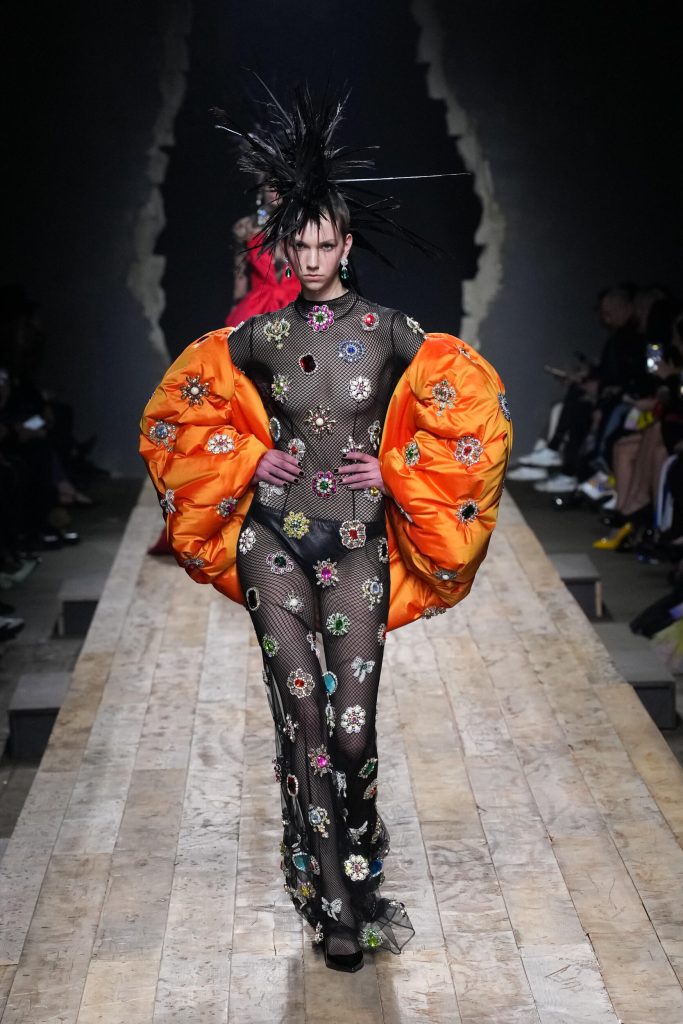

The “core” suffix has gained a lot of traction in TikTok fashion discussions (cottage-core, Barbie-core, etc.), but it’s pretty much been totally divorced from its original meaning that stems from its first use, “hardcore punk,” to describe the more punishing and intense styles of punk that surfaced in the 70s, and the ensuing cultural scenes that grew out of it.
But this collection could truly be said to be “couture-core,” it uses the vernaculars of the highest levels of fashion craft, its overly earnest rejects, and its most outspoken dissidents to melt down and build back up a world all its own.
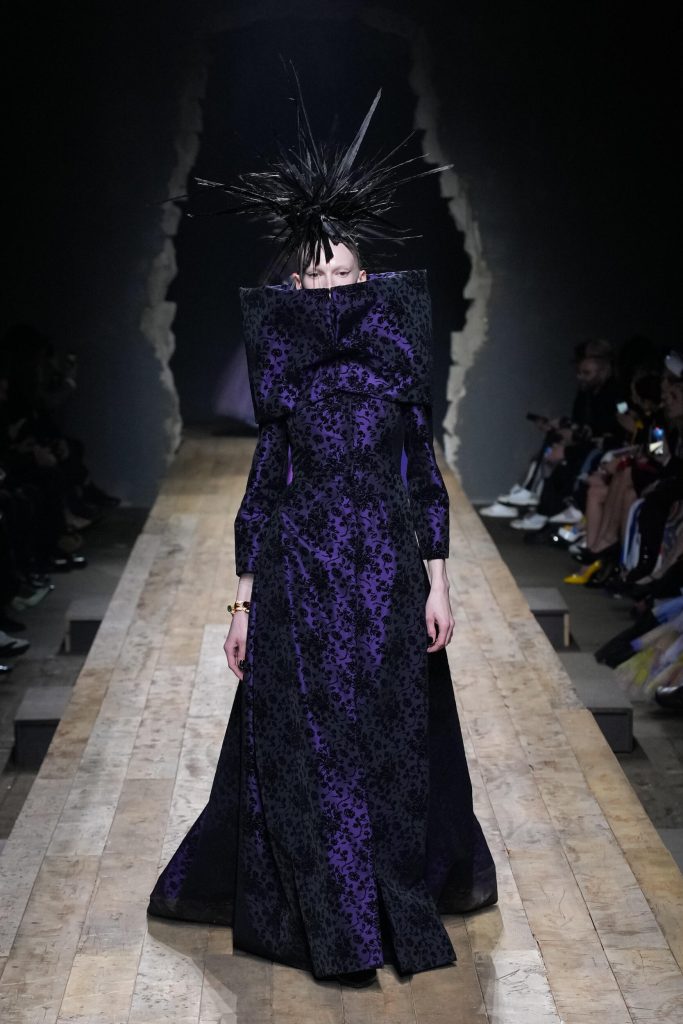
While Jeremy Scott belongs entirely to the world of fashion, he is also one of its most defiant rebels: a balance that only a true artist could master.
